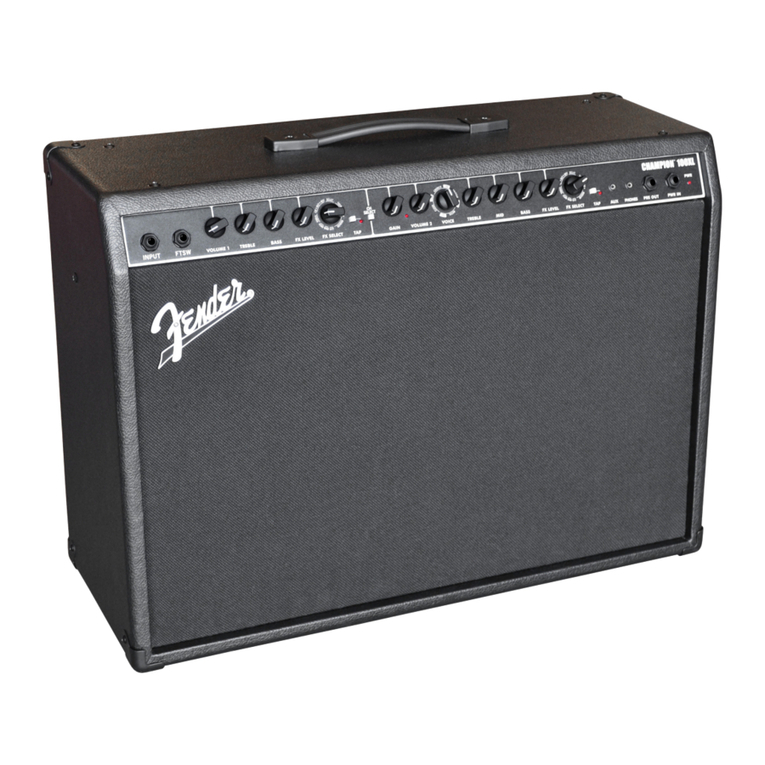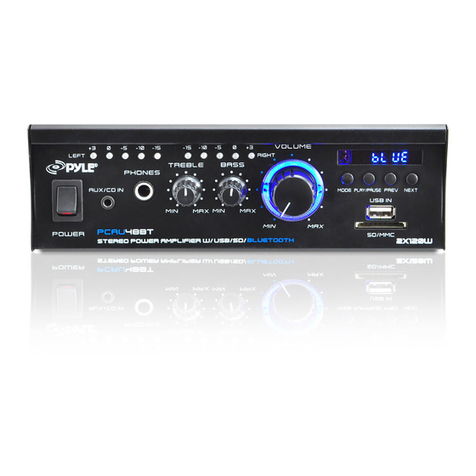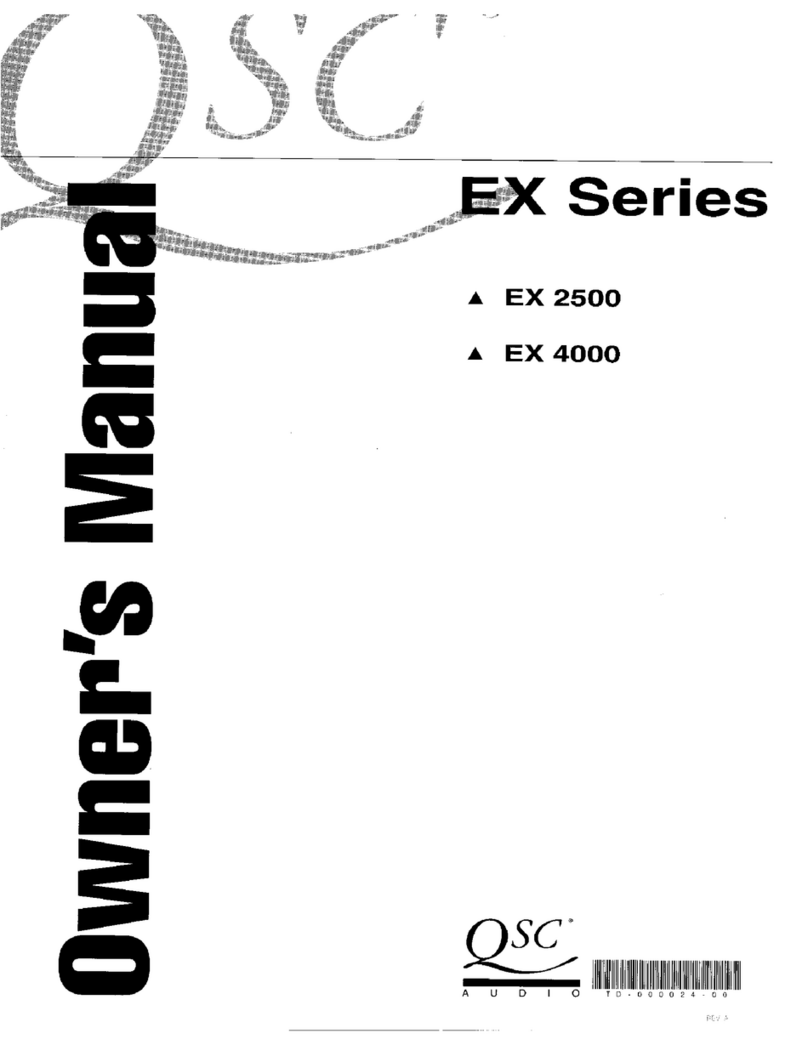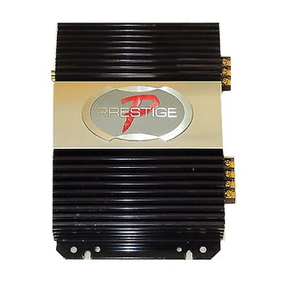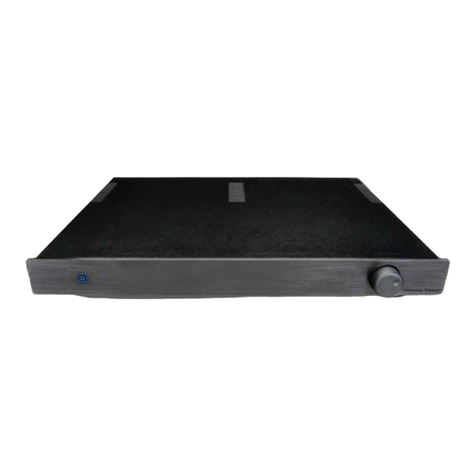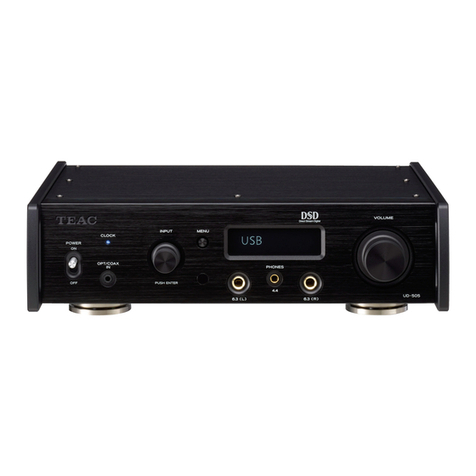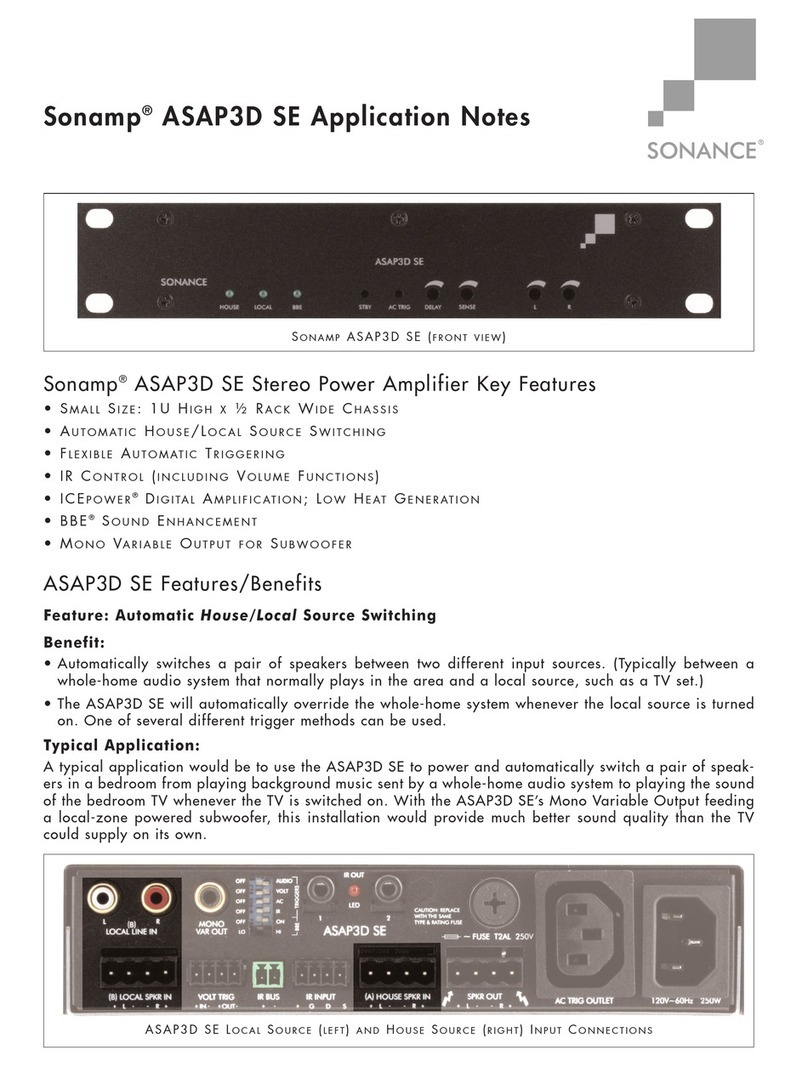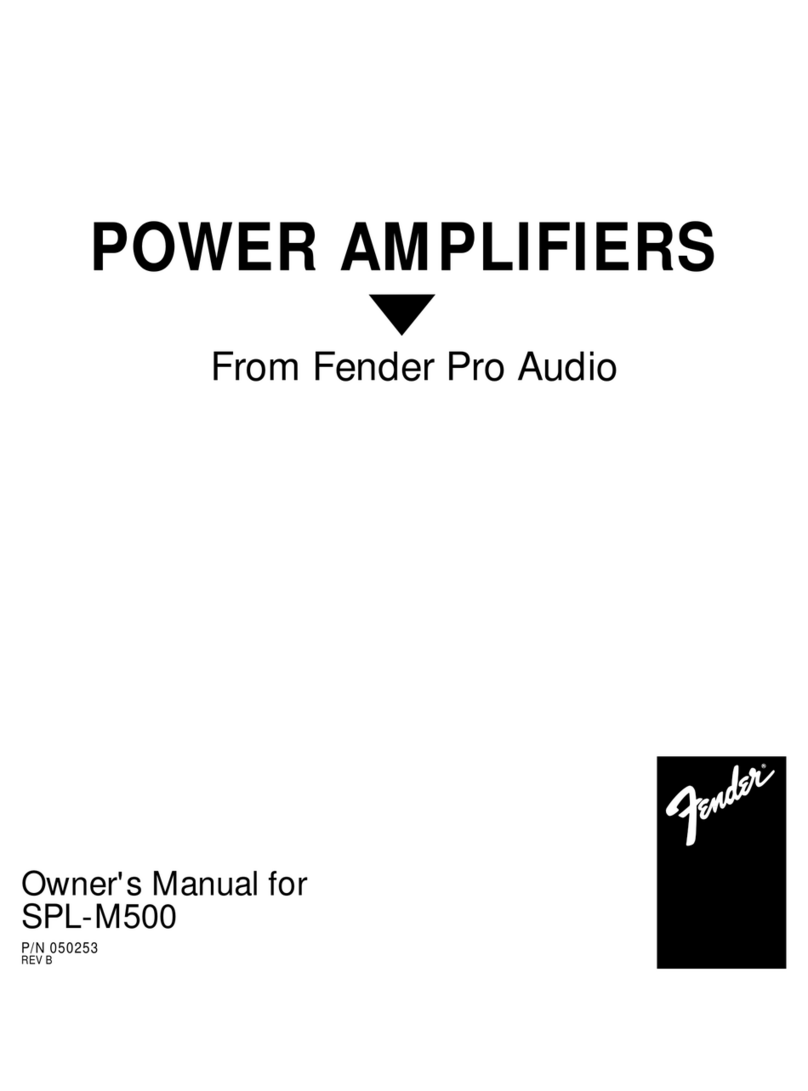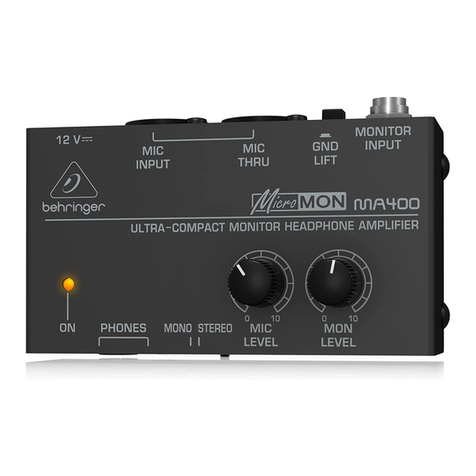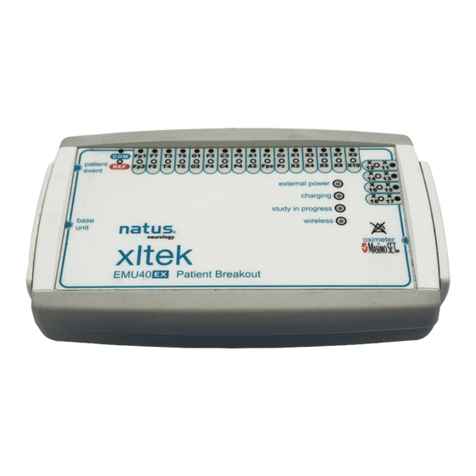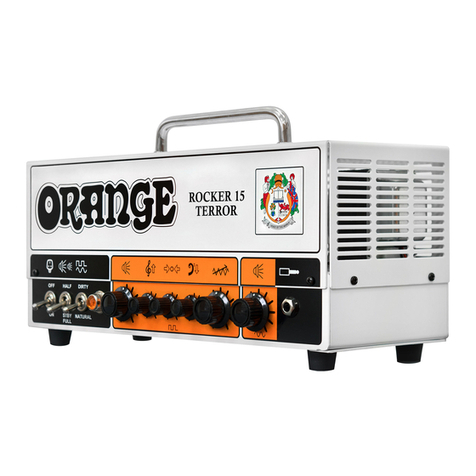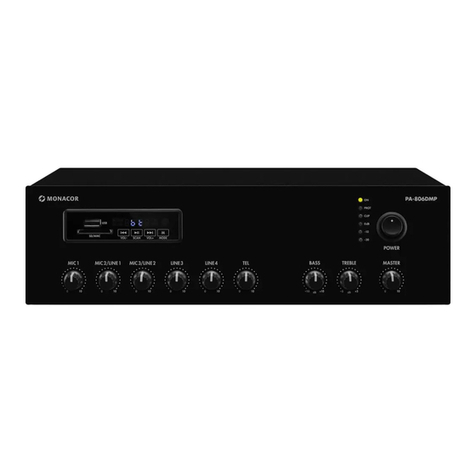Heritage Audio DMA 73 User manual

USER MANUAL
DUAL CHANNEL MICROPHONE
PREAMP, CLASS A
RACKMOUNT
DMA 73
August/2022)Rev.)1.0.)

2
INTRODUCTION
CONTENTS
DESCRIPTION
GETTING STARTED
APPLICATIONS!
SPECIFICATIONS!
SIGNAL FLOW!
TROUBLE SHOOTING
WARRANTY STATEMENT
REGISTRATION
RECALL SHEETS
2
2
3
4
5
6
6
7
8
8
9
TABLE OF CONTENTS
Thank you for choosing the Rackmount DMA 73. Heritage Audio is dedicated to bringing you ´the sound of yesterday for
tomorrow´. We specialize in capturing that unique, enticing sound that everybody has fallen in love with. For years
engineers, producers and musicians have been yearning for that classic vibe. Usually the only option is to search for
old, used original equipment that is almost always in a questionable state of operation. This brings with it a whole lot of
other issues, making the experience less than desirable. Not to mention the very high prices asked for this equipment,
which makes them virtually unobtainable for the great majority. Now it´s possible to obtain that same sound with a
brand new piece that will give you all the problem-free, heavy-duty use you´ll need for years of music making history.
Peter Rodriguez
CEO!
Heritage Audio - Madrid, Spain
INTRODUCTION
© 2022 Heritage Audio S.L. is the sole owner of the copyright of all information and drawings contained in this manual which are not to be copied or
reproduced by any means or disclosed in part or whole to any third party without written permission.
Heritage Audio reserves the right to alter specifications without notice. The information in this manual has been carefully checked and is believed to
be accurate at the time of publication. However, no responsibility is taken by us for inaccuracies, errors or omissions nor any liability assumed for any
loss or damage resulting either directly or indirectly from use of the information contained within it.
DMA 73
AC POWER CORD EU & US
EXTERNAL LINEAR PSU

DESCRIPTION
73-style Mic Preamp
The top of the line stereo microphone preamplifier from Heritage Audio, there is no other current offering from any other
major brand giving as much, in terms of authenticity, quality of construction and sound.
The Heritage Audio DMA 73 is a true dual 3-stage 73-style mic preamp in a 1 rack unit format. Added to the accurate
vintage features, there are some key ones for covering all the needs of modern producers, engineers and musicians.
Employing only discrete circuitry and conventional, vintage-style components, the DMA 73 is a faithful 3-stage all Class
A 73 preamp. Custom styroflex and tantalum capacitors have been used throughout, no corners cut.
The DMA 73 is completely hand-made and hand-wired in our Madrid Spain facility, employing only traditional through
hole circuitry, just like it was done in the 70s. It indeed takes a massive amount of qualified labor to get one unit ready
for studio operation. The results are simply stunning.
Carnhill input transformers are hand wound at the Oxford factory exclusively for Heritage Audio, enclosed in vintage
correct green metal cases for the ultimate in detail nailing. The vintage character is indeed guaranteed and you won´t
find them in any other brand´s products.
The line mode allows for reamping prerecorded tracks and it is perfect for adding the magic vintage Class A mojo to
lifeless recordings. It indeed makes use of the mic input transformer.
The DI circuit is an all discrete Class A JFET circuit ahead of the microphone transformer, so none of the magic is
compromised.
Since its introduction in 2012, the Heritage Audio´s DI circuit has become a classic for recording bass guitar direct.
When looking to spend top dollar for the ultimate vintage 73 preamp experience, always keep the following in mind:
Transformers can make all the difference in the world.
The DMA 73 Transformers:
No 73 preamp is such without the correct transformers. Heritage Audio went a step further then competition. The output
transformer, the same used all along Heritage´s line of products, is a Carnhill gapped one made exclusively for us in the
St Ives factory. The input transformer, again exclusive to our company, is made in Carnhill´s Oxord factory, and has a big
impact on the extra mojo of the unit. It is the same one found in our higher end 80 Series modules and is one of the
main reasons for sonic differences in between the DMA 73 and the competitors.
When looking for an exclusive sound, do not settle for non-exclusive transformers.
3

GETTING STARTED
4
6
7
8
9
10
OUTPUT ATTENUATOR
Attenuates from 0 to Infinity
MIC INPUT IMPEDANCE
(Lo z)
1200 Ωor 300 Ωwhen pressed
LINE
Switches from MIC/D.I. to Line
MIC PAD PUSH BUTTON
-20 dB pad, ahead of the input
transformer
PHASE
Flips phase 180º
FRONT
REAR
1
2
3
4
POWER INPUT
To Be Connected to the external Power
Supply
LINE OUTPUT
Male XLR Connector
LINE INPUT
Female XLR Connector
MIC INPUT
Female XLR Connector
1
2
3
4
5
INPUT GAIN SWITCH
5 dB Steps From 30 to 80
D.I. INPUT
High Impedance Class A JFET
D.I.
Switch to actívate the D.I. input
PHANTOM POWER
Activates 48 V
HIGH PASS FILTER
-3 dB at 82 Hz, Discrete Class
A
2
4
1
6
5
3
1
10
9
8
7
2
3
4
All XLRs are:
Pin 1: GND!
Pin 2: Hot!
Pin 3: Cold
1
2
3
3
2
1
GND!
Hot (+)!
Cold (-)
MALE XLR
FEMALE XLR
D.I. Jack:
Tip: Signal!
Sleeve: Ground!
Tip=Signal
Sleeve=Ground/Shield
Tip
Sleeve

MIC
APPLICATIONS
D.I.
LINE
CONDENSER MIC - L
OUTPUT - R
LINE INPUTS - AUDIO INTERFACE
USB - COMPUTER
USB - COMPUTER
USB - COMPUTER
LINE INPUT - L
CONDENSER MIC - R
ACTIVATE +48 V FOR CONDENSER MIC
MIC INPUT R
MIC INPUT L
OUTPUT - L
GUITAR FX PEDAL
OUTPUT - R
D.I. INPUT - R
D.I. INPUT - L
LINE INPUTS - AUDIO INTERFACE
LINE INPUTS - AUDIO INTERFACE
5
LINE INPUT -R
LINE OUTPUTS - KEYBOARD
OUTPUT - L
ACTIVATE LINE SWITCHES
OUTPUT - R
OUTPUT - L

SPECIFICATIONS
•Microphone input impedance: High=1200 Ωminimum; Low= 300 Ωminimum. Higher gain positions gradually have
greater impedances, optimum for low gain ribbon mics. Input is transformer balanced and floating.
•Line input impedance: 10 kΩbridging, transformer balanced and floating.
•Output impedance: Less than 75 Ω, Carnhill transformer balanced and floating, to drive a load of 600 Ω(Factory
terminated).
•D.I. input impedance: Greater than 2 MΩ, unbalanced.
•Maximum output: Greater than +26 dBu into 600 Ω(internally terminated).
•THD: Less than 0,025 % at 1 kHz, Less than 0,05 % at 100 Hz.
•Frequency response: 20 Hz (+0,3 dB) to 20 kHz (-0,2 dB).
•Maximum Gain: Slightly greater than 80 dB.
•Output stage noise: Less than -100 dBu.
•Power consumption: 88 mA per rail @ ± 16 V DC.
(External linear PSU to avoid electromagnetic radiation into the audio transformers (a.k.a. hum).
• Dimensions DMA 73 (W x H x L): 482 mm x 44 mm (1 Rack unit) x 184 mm.
•Weight: 3,4 Kg.
• Dimensions External PSU (W x H x L): 200 mm x 44 mm (1 Rack unit) x 160 mm.
•Weight: 1,9 Kg
6
SIGNAL FLOW
MIC/LINE INPUT
LINE OUTPUT
OUTPUT AMP
INPUT AMP
CHANNEL RIGHT
PAD
LOZ
PHASE
HIGH PASS FILTER
CHANNEL LEFT
MIC/LINE INPUT
LINE OUTPUT
OUTPUT AMP
INPUT AMP
PAD
LOZ
PHASE
HIGH PASS FILTER
D.I.
D.I.

TROUBLE SHOOTING
PROBLEMS
SOLUTIONS
There doesn´t appear to be any signal at all arriving at the
back XLR.
Make sure the GAIN knob is not in the ´Off´ position.
There still doesn´t appear to be any signal at all arriving at
the back XLR.
Check to see if a jack cable has been left plugged into the
front panel D.I.
Even at the lowest position on the GAIN knob I still have
too much gain.
When this happens you should activate the PAD button.
This will reduce the input by 20 dB ahead of the input
transformer.
Condenser microphones don´t seem to work with DMA 73.
Make sure the red +48 V button is pressed in to activate
the phantom power sent to the microphone.
There doesn´t seem to be any output at all from the unit.
Check to see if the OUTPUT knob is fully turned down as
this will attenuate the signal completely.
Sending a signal to the unit from a DAW overloads it
terrible.
It is necessary to press the LINE button when sending it a
line level source.
If not, it is expecting a Microphone signal with a very
different impedance.
I´d like to use my amp but have connected my guitar to
the DMA 73 to send to the FOH engineer.
Simply tap the signal from the THRU output jack. It is
identical to the signal received at the DMA 73 input.
Experiencing hum no matter the cable used.
Check the physical placement of the DMA 73.Make sure it
is not too close to other equipment that may cause the
problem.The huge toroidal transformer installed can be
suseptible to picking up hum.
7

LIMITED 2 YEAR WARRANTY
Heritage Audio DMA 73 is warranted by Heritage Audio SL to be free from defects in materials and workmanship for the
period of 2 years to the original purchaser. In the event of such defects, the product will be repaired without charge or, at
our option, replaced with a new one if delivered to Heritage Audio prepaid, together with a copy of the sales slip or other
proof of purchase date. The warranty excludes problems due to normal wear, abuse, shipping damage or failure to use
the product in accordance with the specifications.
Heritage Audio shall not be liable for damages based upon inconvenience, loss of use of the product, loss of time,
interrupted operation or commercial loss or any other damages, whether incidental, consequential or otherwise.
This warranty is not transferable.
Heritage Audio and the Heritage Audio “H” logos are registered Trademarks owned and/or licensed by Heritage Audio.
REGISTRATION
8
Please visit our website:
WARRANTY STATEMENT
https://heritageaudio.com/registration/

RECALL SHEETS
9
Session / Title: Track: Connected Equipment: !
Date: Instrument: Notes:
Switch ON
Switch OFF
Session / Title: Track: Connected Equipment: !
Date: Instrument: Notes:
Switch ON
Switch OFF
Table of contents
Other Heritage Audio Amplifier manuals
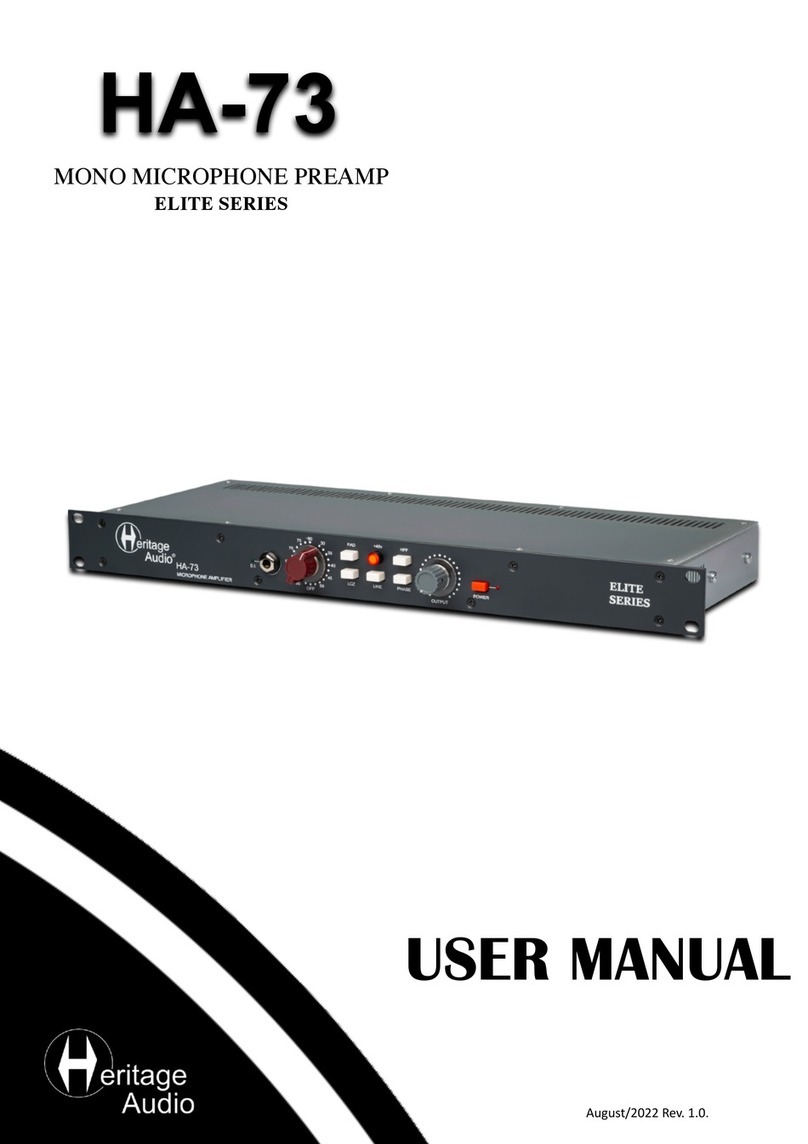
Heritage Audio
Heritage Audio ELITE Series User manual
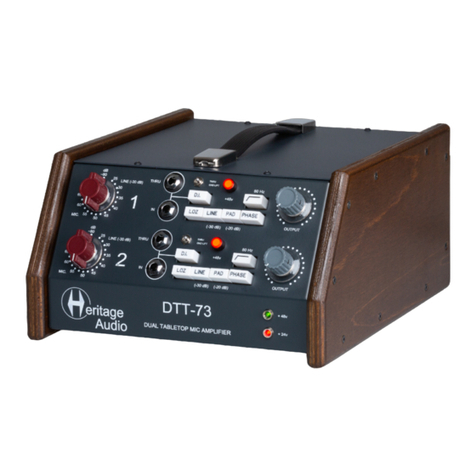
Heritage Audio
Heritage Audio DTT-73 User manual

Heritage Audio
Heritage Audio ELITE Series User manual

Heritage Audio
Heritage Audio 8173 User manual

Heritage Audio
Heritage Audio ELITE Series User manual
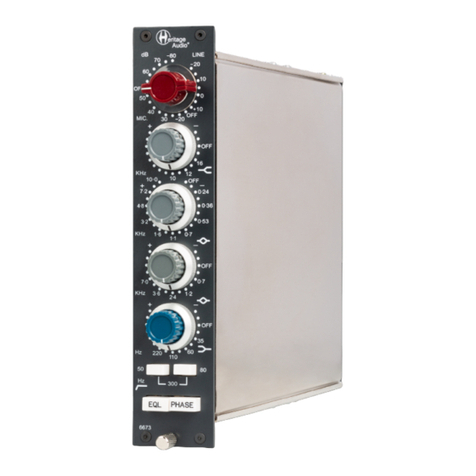
Heritage Audio
Heritage Audio 6673 User manual

Heritage Audio
Heritage Audio ELITE Series User manual

Heritage Audio
Heritage Audio ELITE Series User manual


